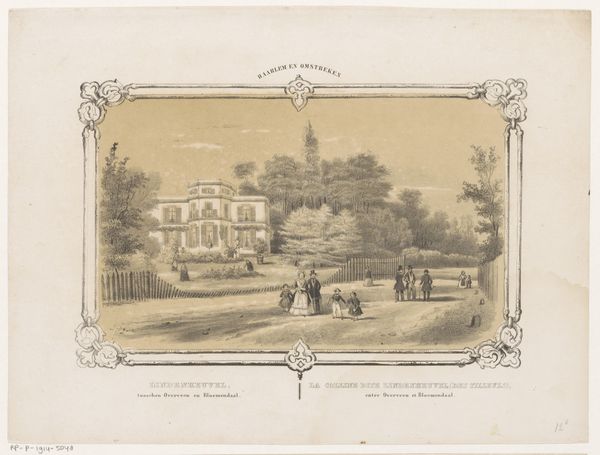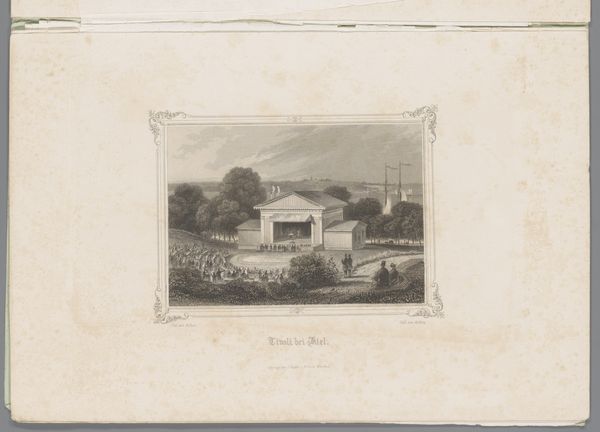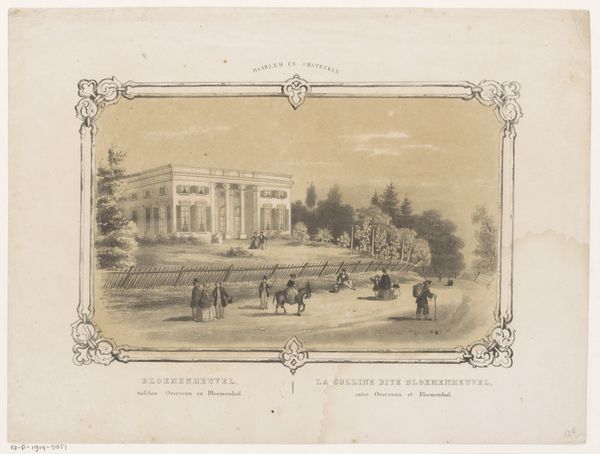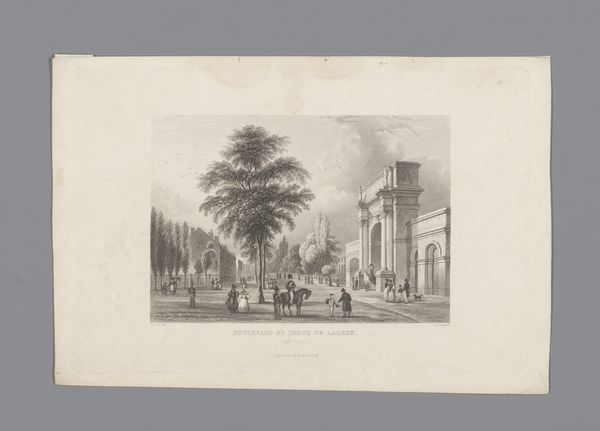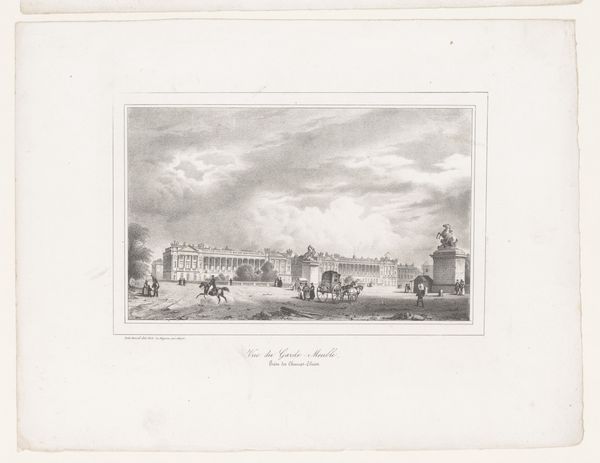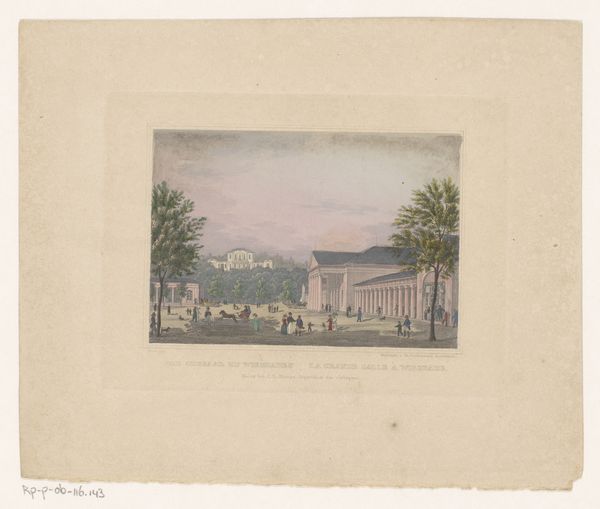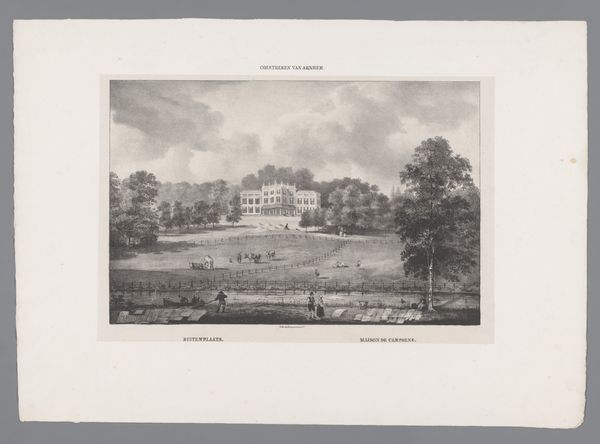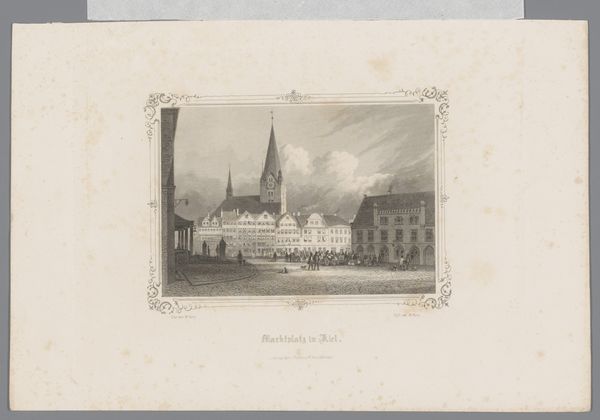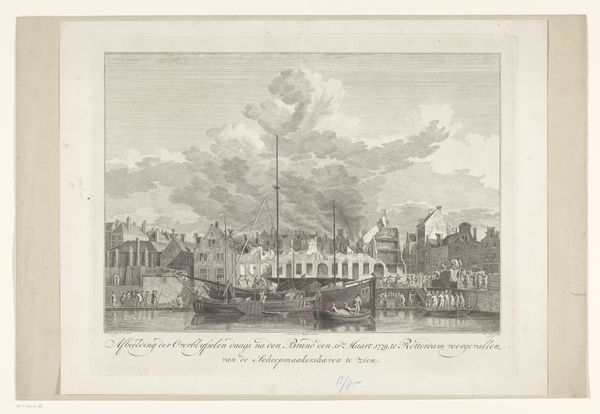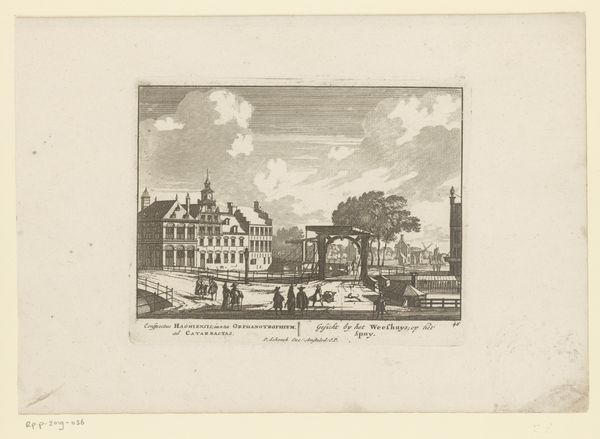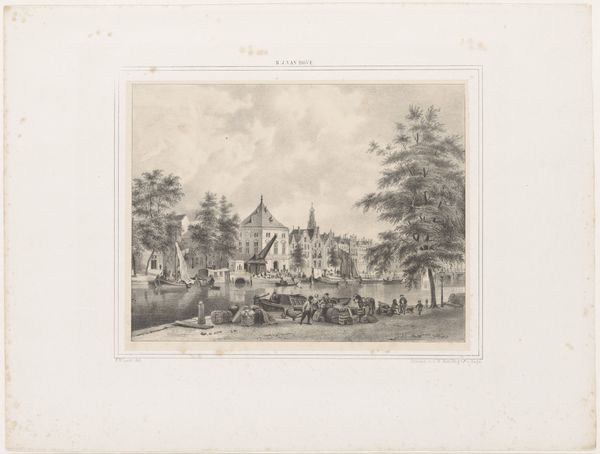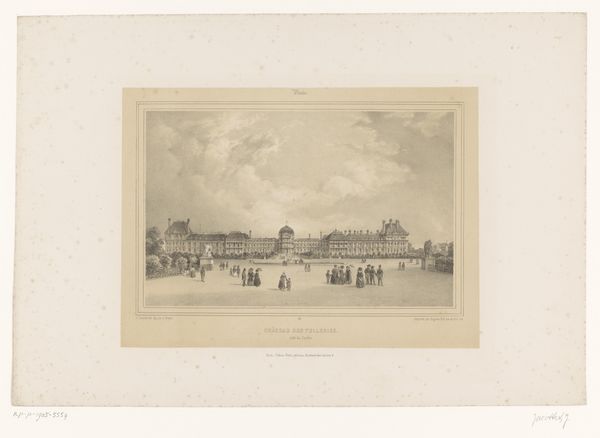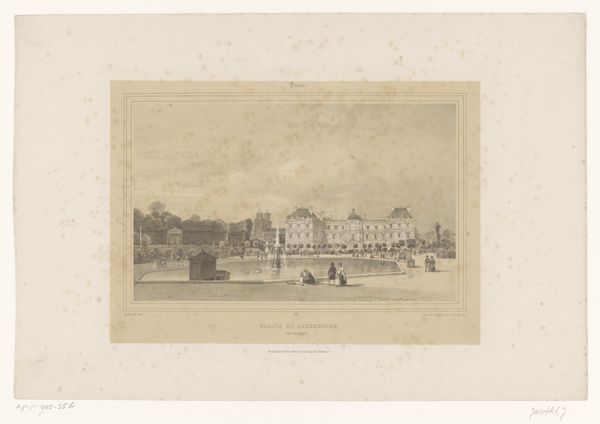
drawing, paper, ink
#
drawing
#
dutch-golden-age
#
paper
#
ink
#
romanticism
#
cityscape
#
genre-painting
#
realism
Dimensions: height 290 mm, width 425 mm
Copyright: Rijks Museum: Open Domain
Huib van Hove’s print of the Botermarkt in Amsterdam is an intricate image, made using a technique called lithography. This printmaking process democratized image production in the 19th century. Unlike earlier methods like etching or engraving that required specialized tools, lithography relies on the chemical repulsion between grease and water, which allows artists to draw directly onto a stone or metal plate with a greasy crayon or ink, making the process relatively straightforward. The appeal of lithography lay in its efficiency. It enabled the easy reproduction of images, fuelling the growth of illustrated newspapers, books, and advertisements, and satisfying the growing demand for visual media among the expanding middle classes. The stark contrast between light and shadow and the textural variation created in the print, capture the hustle and bustle of the marketplace, and speak to the rise of consumer culture during this time. By embracing lithography, van Hove engaged with both the traditions of fine art and the emerging world of mass production.
Comments
No comments
Be the first to comment and join the conversation on the ultimate creative platform.

